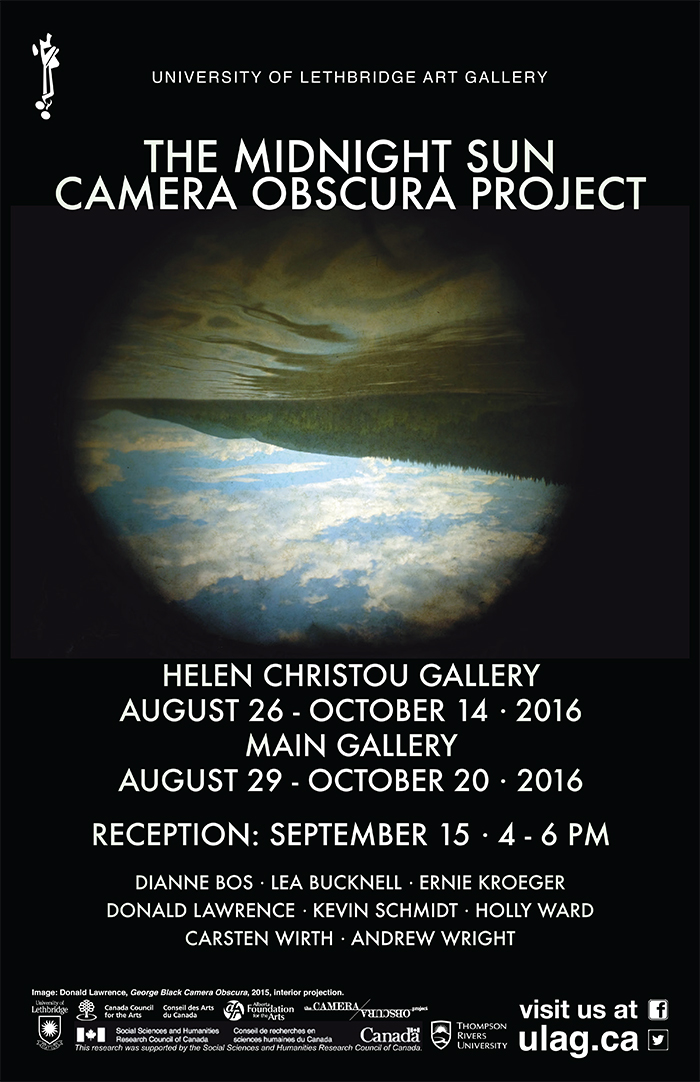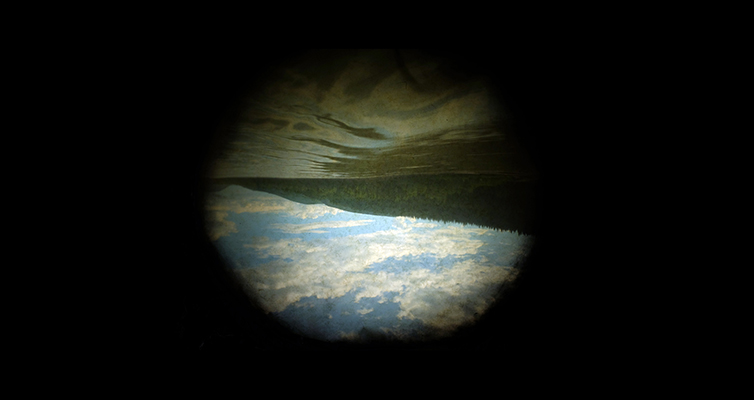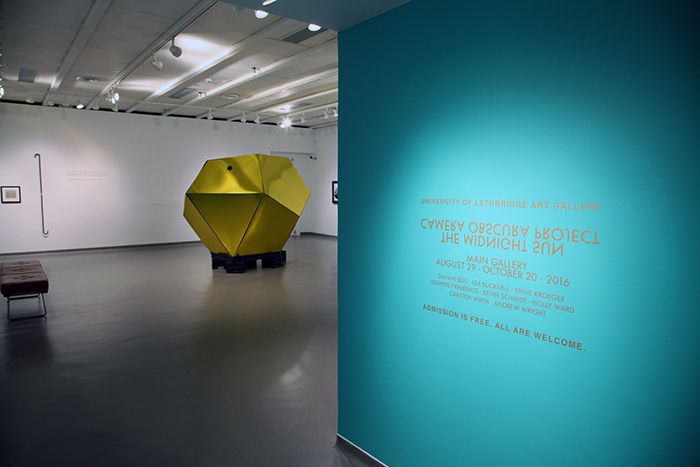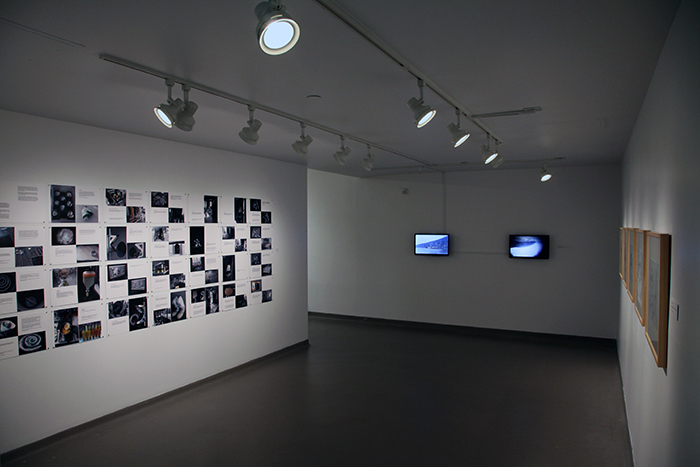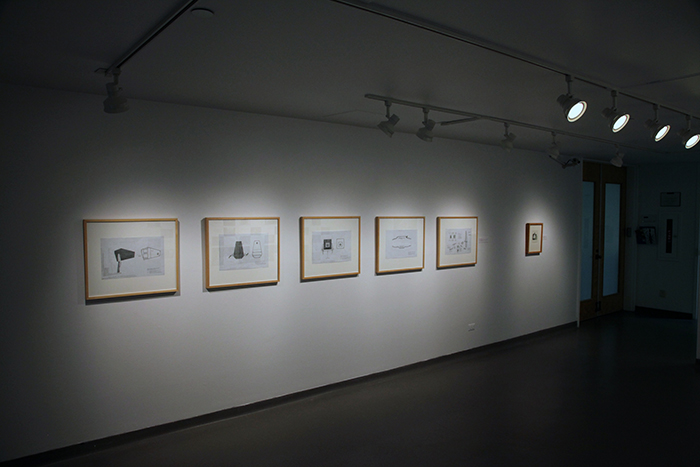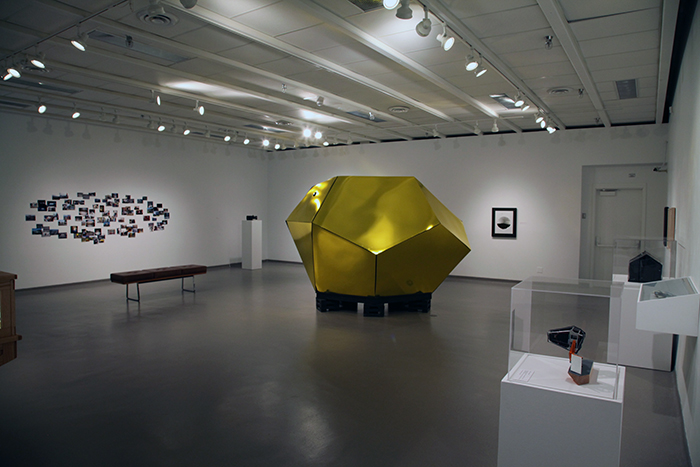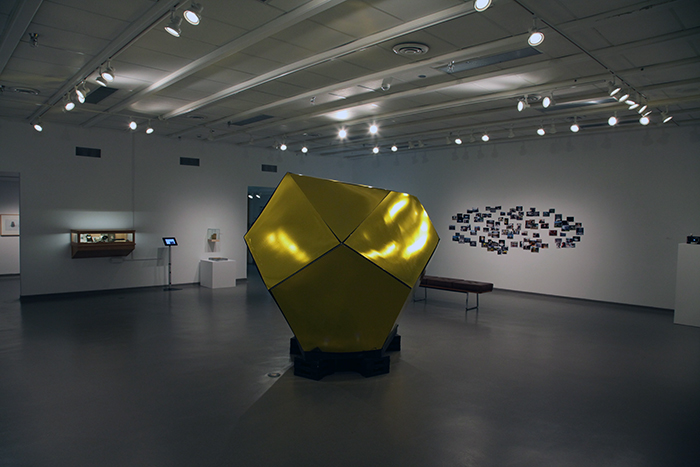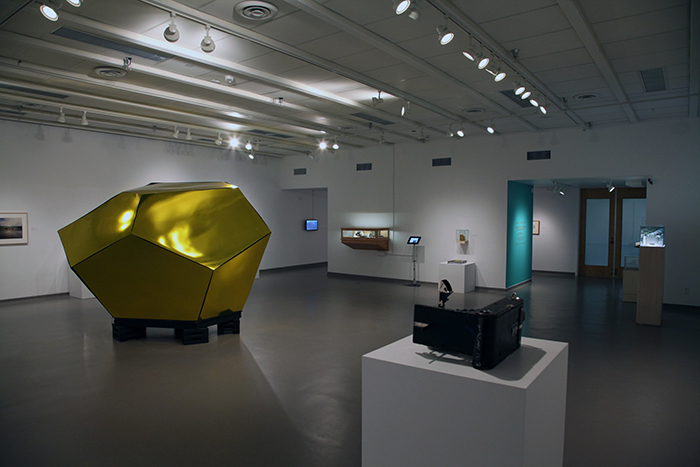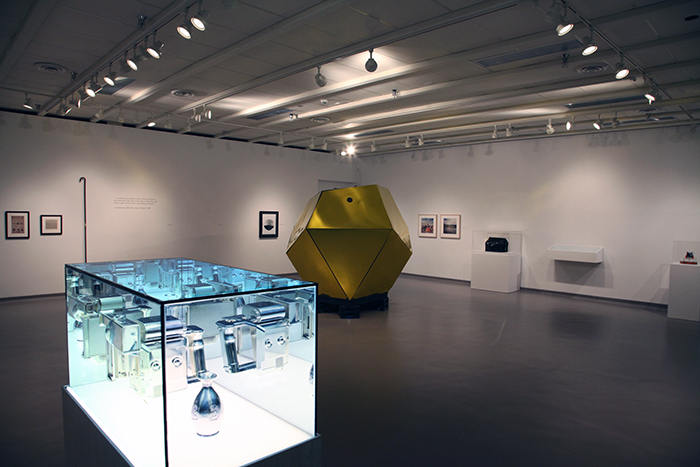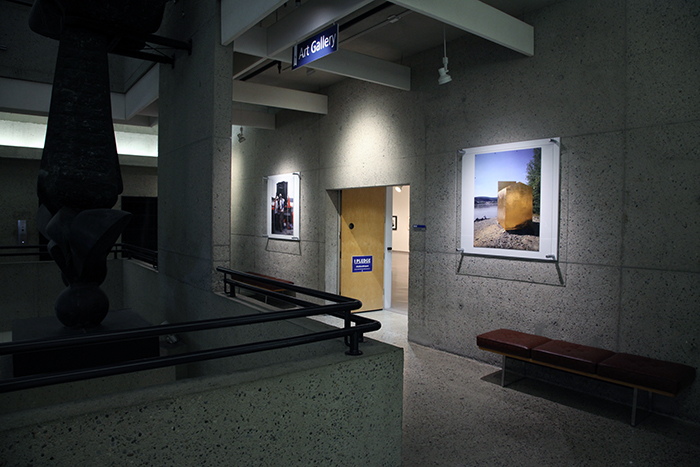August 29 – October 20, 2016
Main Gallery
Reception: September 15, 4 – 6 pm
Artists: Dianne Bos, Lea Bucknell, Ernie Kroeger, Donald Lawrence, Kevin Schmidt, Holly Ward, Carsten Wirth, Andrew Wright
Curated by Josephine Mills
The Midnight Sun Camera Obscura Festival brought together an international group of artists and other researchers interested in cameras obscura and related optical phenomenon as a meeting place of art and science, cultural and wilderness settings, learning and play. The project was conceived by Kamloops-based artist and visual art professor Donald Lawrence and was funded by the Social Sciences and Humanities Research Council of Canada (SSHRC). The group of artists, scholars, and art students came together for summer solstice, 2015, in Dawson City, Yukon where they used the exceptionally long days and stunning landscape to produce a variety of art works.
As is clear in the range of work proposed for this exhibition, the camera obscura holds a fascination with contemporary artists and audiences. Camera obscura simply means ‘dark room’ in Latin and was a term coined to describe devices devised to aid perception, but can include any darkened space into which light enters through a small opening (sometimes aided by a lens and a mirror). Mills attended the festival in the Yukon and has curated an exhibition out of the project for the U of L Art Gallery. This new phase of the project will connect the work with a wider public and, in addition to the exhibition, the U of L Art Gallery is working on a national tour and a major publication. The exhibition includes several of the cameras obscura – the actual objects for viewing and recording surrounding imagery; images projected by these devices; documentation of the event; and new work produced by the artists in response to the initial research and festival.
Curatorial Statement
This exhibition arose from an extensive research project carried out in Dawson City, Yukon. The Midnight Sun Camera Obscura Festival brought together an international group of artists and other researchers interested in cameras obscura and related optical phenomenon as a meeting place of art and science, cultural and wilderness settings, learning and play. The project was conceived and organized by Kamloops-based artist and visual arts professor Donald Lawrence and was funded by the Social Sciences and Humanities Research Council of Canada (SSHRC). The group of artists, scholars, and art students came together for an initial research visit during summer solstice, 2014, in Dawson City, Yukon and then returned at the same time in 2015 to produce the festival. Using the exceptionally long days to provide maximum effect, the festival included a range of public-site installations around Dawson City, exhibitions in the local galleries, workshops and a community exhibition with the Yukon Arts Centre, performances, tours, and public talks. With the high level of research supported by SSHRC, the artists were able to produce exceptionally strong and diverse work that that engaged visitors in the interplay of art and science as well as thinking about ideas of the North.
As is clear in the range of work in this exhibition, the camera obscura holds a fascination with contemporary artists and scholars. Camera obscura simply means ‘dark room’ in Latin, a term coined to describe devices devised to aid perception, but can include any darkened space into which light enters through a small opening (sometimes aided by a lens and a mirror). Present from early history onward, the camera obscura took on its name and became more developed in the Renaissance and had a revival during Victorian and Edwardian times with an expanding public interest in the science of light that included the development of the modern camera. Contemporary artists and theorists continue to work with the deceptively simple properties of this device and the extraordinary viewing experience which they can produce. Even without a lens, the imagery can be startling clear and without a mirror, the image will be upside down and reversed from what a person perceives outside the device. The inverted image and focus on a part of the surroundings, determined by how the artist places and configures the device, produces the productive combination of playful wonderment with scientific observation and insight.
The camera obscura as an object is an immersive experience that fully engages the viewer as it requires that one at least stick their head into a darkened cover or crawl inside a dark chamber – and close the door completely. For the Midnight Sun Camera Obscura Festival the artists pushed the limits of what these objects could be and the works included over-sized gold nuggets, a shed with a gold-rush style boom-town false front, a camera obscura mounted on the George Black ferry across the Yukon river, a classic river-side pavilion, and a prospector’s style of tent converted to view the stars during summer solstice. Probably the most challenging of all in terms of requiring trust by the would-be viewer, Mike Yuhasz’s device involved climbing inside a passenger van with blackened windows and plywood box insert, in advance of embarking on a tour of the town as seen in the Vanscura’s inverted, moving image.
The University of Lethbridge Art Gallery is pleased to present the results of the Midnight Sun Camera Obscura Project in our Main and Helen Christou Galleries. The exhibition includes one of the actual cameras obscura, “Eye of the Beholder” by Holly Ward and Kevin Schmidt, one of two that was produced in Dawson City for viewing and recording surrounding imagery; images produced within several of the devices; documentation of the event; and new work produced by the artists in response to the initial research and festival. As well, in a companion public-site event, the Prairie Sun Project (August 21, 2016), several of the artists created public-site works and performances for the University of Lethbridge’s Coutts Centre for Western Canadian Heritage near Nanton, Alberta. Most notable of these new works, Donald Lawrence transformed a 1920s grain bin into the “Nanton Camera Obscura” which will be a permanent addition to the Coutts Centre. The U of L Art Gallery is working with Donald Lawrence and his SSHRC research team on a national tour of the exhibition and a major publication.
– Josephine Mills, Director/Curator, University of Lethbridge Art Gallery
